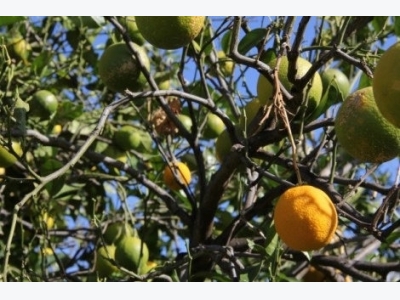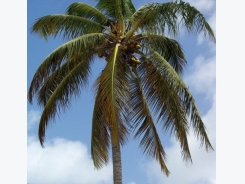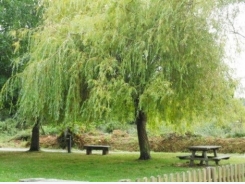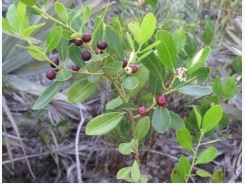Common Diseases of Orange Trees

When properly planted and cared for, orange trees don’t suffer a lot of disease or insect problems.
Preventing frost damage is often the most pressing issue, depending on where you live, because orange trees can’t tolerate temperatures much below 32 degrees, depending on the variety.
If you live in U.S. Department of Agriculture plant hardiness zones 8 through 12, you can grow orange trees successfully. Not only do these trees yield delicious fruit, but they make beautiful landscape trees with their glossy, green leaves, fragrant flowers and bright fruit.
Below, we’ve outlined some of the most common problems orange trees suffer. Keep your trees healthy and vigorous with proper care and you’ll experience fewer issues. Plant orange trees in light, well-draining soil, in full sun. A protected area near the house is ideal if you occasionally get cold spells. Water orange trees throughout the growing season and fertilize them according to the results of a soil test.
Diseases of the Bark and Trunk
Psorosis Bark Scaling Virus Disease.
This disease causes patches of scaling or peeling bark on the trunk and branches. It is most common in older trees. Unfortunately, there is no cure. Continue to care for the tree properly to maintain health. If the tree becomes girdled, it will die and should be removed.
Foot Rot Fungus.
Lesions and cankers around the base of the tree usually indicate foot rot fungus, especially if the lesions ooze sap. This disease is not treatable. Remove and destroy infected trees. To minimize the risk of foot rot fungus, plant trees in well-draining soil and avoid overwatering them. Raised beds and berms are necessary if you have heavy clay soil.
Sooty Canker.
Twigs and branches of trees infected with sooty canker develop peeling bark. Underneath the bark, you’ll find a black fungus. The leaves may turn brown and wither and the twigs may die back. To control sooty canker, remove all infected branches. Cut them back 12 inches behind the infected area and disinfect your tools between cuttings by dipping them in a solution of one part chlorine bleach to 10 parts water.
Diseases of the Leaves
Sooty mold.
Trees affected by sooty mold have blackened spots on the leaves. Sooty mold is not really a disease, but a fungus that feeds on the honeydew left behind by aphids and leafhoppers. Wash the spots off with a gentle soap and water solution. In most cases, aphids and leafhoppers leave on their own, especially if your garden has plenty of predatory insects like ladybugs. In severe infestations, though, you can try spraying the leaves with a steady stream of water or with an insecticidal soap or oil. Completely treating an orange tree is difficult, though.
Tip or Marginal Leaf Burn.
Yellowing at the tips or edges of the leaves usually indicates excess salts in the soil, rather than a disease. To alleviate this problem, flood the soil several times each year to help dilute and leach out the salts.
Citrus Greening.
This bacterial disease is spread by the Asian citrus psylid and causes yellow mottling on the leaves. You might also notice that the midvein seems enlarged and pronounced. There is no cure for this disease, although proper care can help the tree survive.
Cigar Leaf Curling.
Wilted, curled and brittle leaves usually indicate the tree isn’t getting enough water. Install at least three drip irrigators under the tree. Water frequently during dry weather so the soil is moistened to a depth of 2 feet beneath the surface.
Diseases of the Fruit
Citrus Stubborn Disease.
This disease causes lopsided fruit, with the seed pocket on one side of the fruit, rather than in the center. The disease is spread by leafhoppers. Spray infested trees with insecticidal soap or oil to treat the leafhoppers.
Alternaria Black Fungus.
This disease causes a black fungus to grow inside the fruit. There is no control for the disease, although it is more prevalent after rainy weather. Discard the affected fruit, as well as leaf litter.
Fruit Splitting.
This frustrating condition causes the fruit to split open before it is harvested. Fruit splitting is caused not by a disease, but by inconsistent watering and fertilizing. To prevent this problem, water orange trees deeply every one to two weeks, depending on growing conditions.
Related news
Tools

Phối trộn thức ăn chăn nuôi

Pha dung dịch thủy canh

Định mức cho tôm ăn

Phối trộn phân bón NPK

Xác định tỷ lệ tôm sống

Chuyển đổi đơn vị phân bón

Xác định công suất sục khí

Chuyển đổi đơn vị tôm

Tính diện tích nhà kính

Tính thể tích ao




 How to Grow Periwinkle (Vinca)
How to Grow Periwinkle (Vinca)  How to Grow Inkberry (Evergreen Winterberry)
How to Grow Inkberry (Evergreen Winterberry)